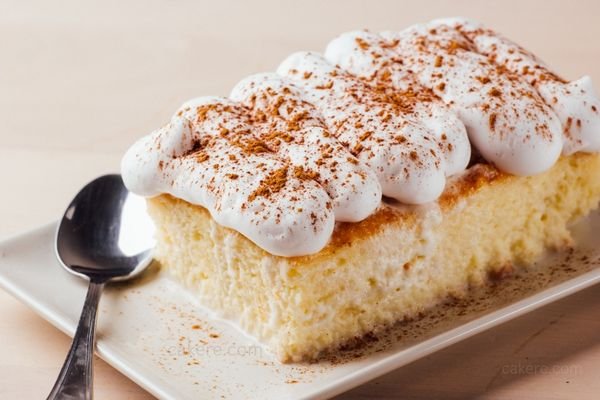When it comes to cakes, we often envision light, fluffy, and spongy creations that melt in the mouth. However, there exists another realm of cakes that defy this norm – dense cakes. These cakes possess a unique charm of their own, offering a contrasting experience to the palate.

The Nature of Dense Cakes
Dense cakes are characterized by their tight crumb structure and weighty feel.
While traditional cakes rely on leavening agents like baking powder and baking soda to create air pockets, dense cakes embrace a more compact composition. This results in a cake that feels richer and more substantial.
Ingredients that Contribute to Density
The choice of ingredients plays a pivotal role in achieving density. Ingredients like cream cheese, butter, and yogurt lend moisture and heft to the cake.
Additionally, the use of less sugar and more flour contributes to the cake’s density, creating a balanced sweetness that’s not overly sugary.
Flavor Profile of Dense Cakes
Dense cakes boast an intensified flavor profile. The reduced air content allows the flavors to concentrate, offering a more pronounced and satisfying taste.
Whether it’s the deep cocoa notes of a fudgy chocolate cake or the spiced warmth of a carrot cake, every bite is a burst of flavor.
Texture: A Delightful Heftiness
The texture of a dense cake is a delightful contrast to its lighter counterparts. It’s substantial and comforting, often invoking a sense of indulgence.
The crumb is compact and moist, with a satisfying chewiness that adds to the overall experience.
Popular Varieties of Dense Cakes
- Cheesecake: A velvety delight with cream cheese as the star ingredient.
- Pound Cake: A classic with a buttery richness that’s hard to resist.
- Fruitcake: Packed with fruits and nuts, offering a festive and dense treat.
- Carrot Cake: A spiced wonder that’s both flavorful and satisfying.
- Black Forest Cake: Layers of chocolate and cherries for a decadent experience.
Baking Techniques for Density
Achieving the perfect density requires specific baking techniques. Mixing the batter until just combined and avoiding overmixing prevents excess air incorporation.
Baking at a slightly lower temperature and using cake strips for even heat distribution further contribute to density.
Pairing and Serving Dense Cakes
Dense cakes pair wonderfully with a variety of accompaniments. A dollop of freshly whipped cream or a scoop of velvety ice cream balances the richness.
They also complement a hot cup of coffee or tea, making for an indulgent dessert experience.
Experimenting with Dense Cake Recipes
Dense cakes provide a canvas for culinary experimentation. Incorporating unique flavors, such as herbs or spices, can elevate the taste profile.
Swapping traditional ingredients with healthier alternatives opens up avenues for creating guilt-free dense cakes.
Dense Cakes: A Cultural Perspective
In different cultures, dense cakes hold diverse meanings. They can symbolize celebrations, mark special occasions, or simply be a part of traditional cuisines.
Exploring these cultural nuances adds depth to the appreciation of dense cakes.
Healthier Dense Cake Options
For health-conscious individuals, enjoying a dense cake doesn’t have to be a guilty pleasure. By using whole grains, reducing sugar, and incorporating fruits and vegetables, it’s possible to create nutrient-rich dense cakes that satisfy both the palate and dietary preferences.
Why Some People Love Dense Cakes
Dense cakes have a loyal fan base. The substantial texture and concentrated flavors are deeply appealing to those who seek comfort and a sense of indulgence in their desserts. The satisfying mouthfeel and lingering taste keep them coming back for more.
Why Some People Dislike Dense Cakes
On the other hand, dense cakes might not resonate with everyone. Some people prefer the airy lightness of traditional cakes and find dense cakes to be overly rich or heavy.
Personal taste and texture preferences play a significant role in this divide.
Tips for Baking the Perfect Dense Cake
- Measure Ingredients Carefully: Precision in measurements is key to achieving the desired density.
- Room Temperature Ingredients: Ensure ingredients like butter and eggs are at room temperature for optimal mixing.
- Don’t Overmix: Mix the batter until just combined to avoid excess air incorporation.
- Choose the Right Pan: Opt for a pan size that promotes even baking and prevents over-spreading.
- Let it Rest: Allowing the cake to rest before serving enhances the flavors and texture.
FAQs
Dense cakes are often more calorie-dense due to their ingredients and texture.
Yes, using almond flour or coconut flour can create a delicious gluten-free dense cake.
Not necessarily. While some dense cakes might require slightly longer baking, it depends on the specific recipe.
Absolutely, dense cakes freeze well and can be enjoyed later.
Yes, by adjusting ingredient ratios and baking techniques, you can transform a traditional cake into a dense delight.
Conclusion
Dense cakes offer a distinct and indulgent dessert experience that appeals to a specific set of taste preferences.
With their concentrated flavors and satisfying textures, they carve out a unique space in the world of baked goods.
So, the next time you’re in the mood for a dessert that’s hearty and rich, consider treating yourself to a slice of dense cake.
